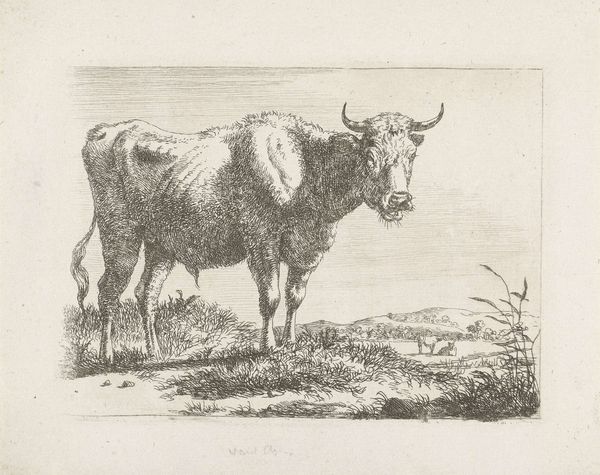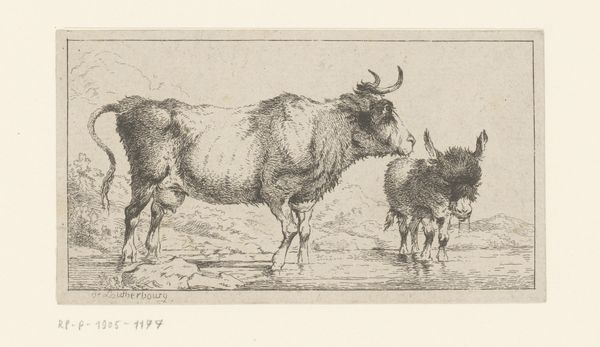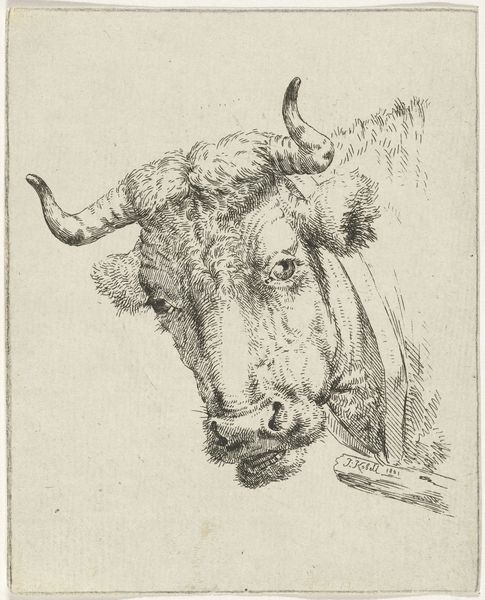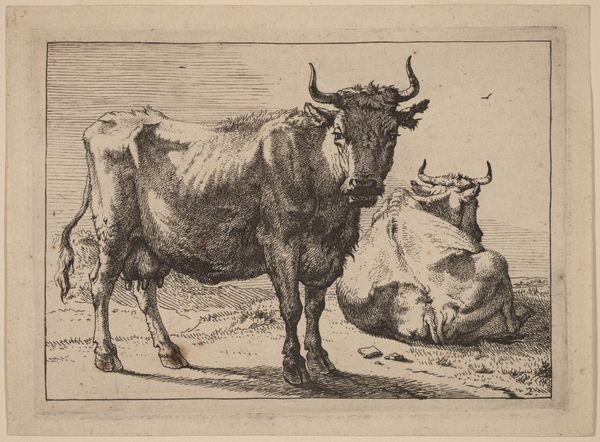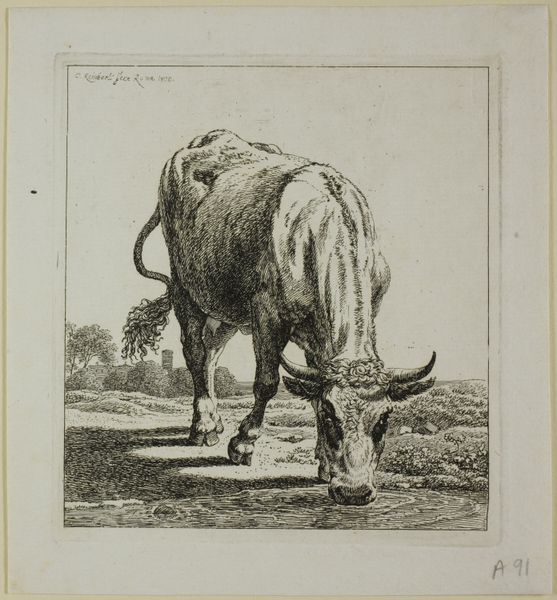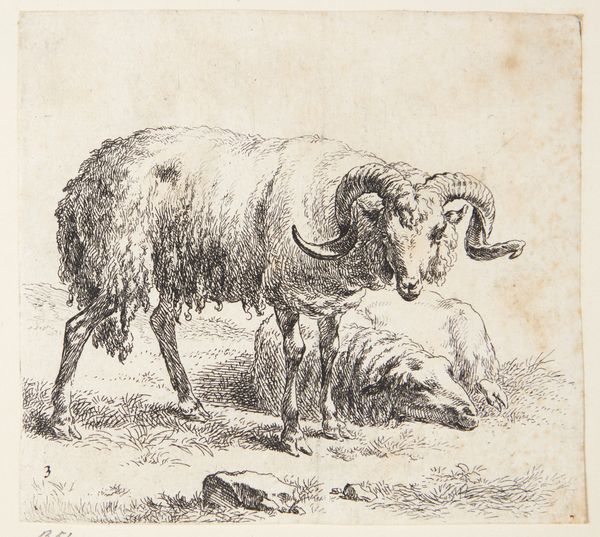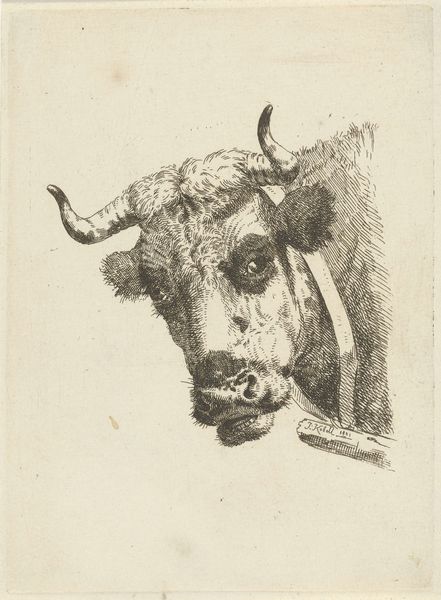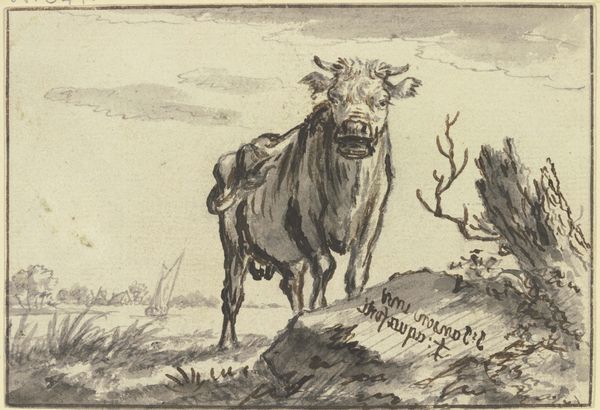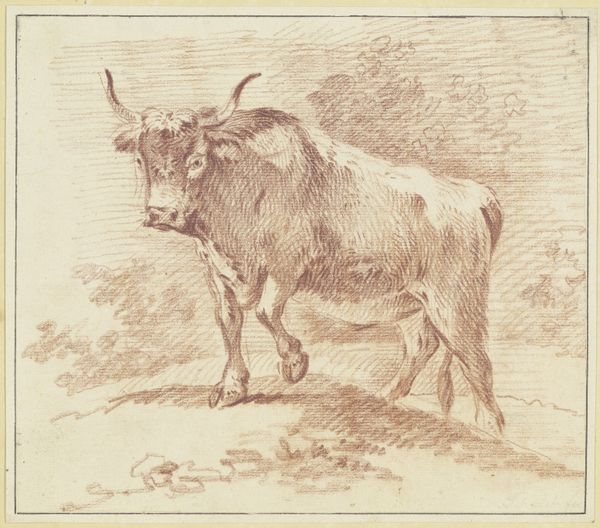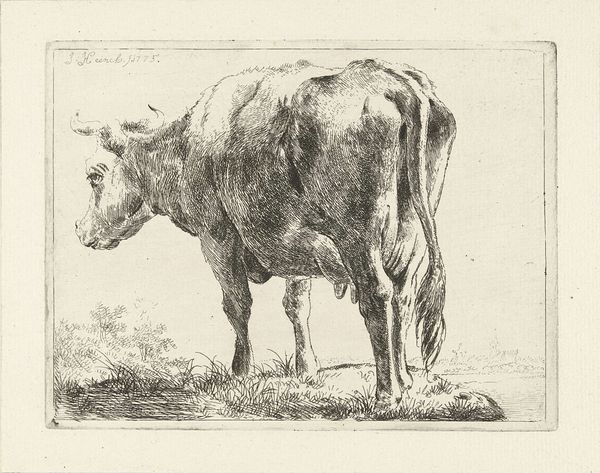
drawing, print, engraving
#
drawing
#
animal
# print
#
landscape
#
engraving
#
realism
Dimensions: Sheet: 7 5/16 × 6 1/8 in. (18.5 × 15.5 cm)
Copyright: Public Domain
Curator: Here we have Adam von Bartsch’s engraving, “A cow, seen from the front," created in 1805. It’s currently housed here at the Metropolitan Museum of Art. Editor: My first thought is simply "imposing". The sheer scale of the animal, especially considering the relatively small dimensions of the print itself, makes it quite striking. The artist’s perspective almost forces you to look up at it. Curator: Indeed. Bartsch's skillful use of line and shading gives the cow a real sense of volume and presence. Notice how the density of lines creates areas of shadow, defining the musculature and texture of the animal's coat. It’s an exemplar of realism within the landscape tradition. Editor: I see it as a very deliberate composition. Consider how the inclusion of the animal transforms our reading of this land—turning picturesque scenery into a symbolic representation of agriculture, ownership, and perhaps even human dominance over the natural world. Curator: One could argue, though, that it's Bartsch's technical skill, his mastery of the engraving medium, that truly elevates the piece. Note the varying line weights and cross-hatching. It's not merely representational; it's a demonstration of the printmaker's art. Editor: And in the early 19th century, who were the consumers of these images, and what were the ideological frameworks informing how they interpreted and interacted with images of animals in the landscape? This becomes quite revealing. It invites analysis of the social history embedded within the artwork. Curator: True, but one mustn't forget to appreciate the inherent beauty within Bartsch’s approach. It’s an elegant rendering that captures the essence of the subject with precision. The lines, though meticulously applied, possess an almost organic quality, don't you think? Editor: Absolutely, but for me, it’s this interplay of visual signifiers and cultural contexts that makes Bartsch’s engraving so engaging. The gaze of this cow is not passive, and perhaps there’s an intentional mirror being held up here, where the viewer confronts not only animal presence but an entire system of interconnected social practices. Curator: I am compelled by the exquisite linework. Editor: And I find value in the dialogues the piece creates within the social landscape.
Comments
No comments
Be the first to comment and join the conversation on the ultimate creative platform.

